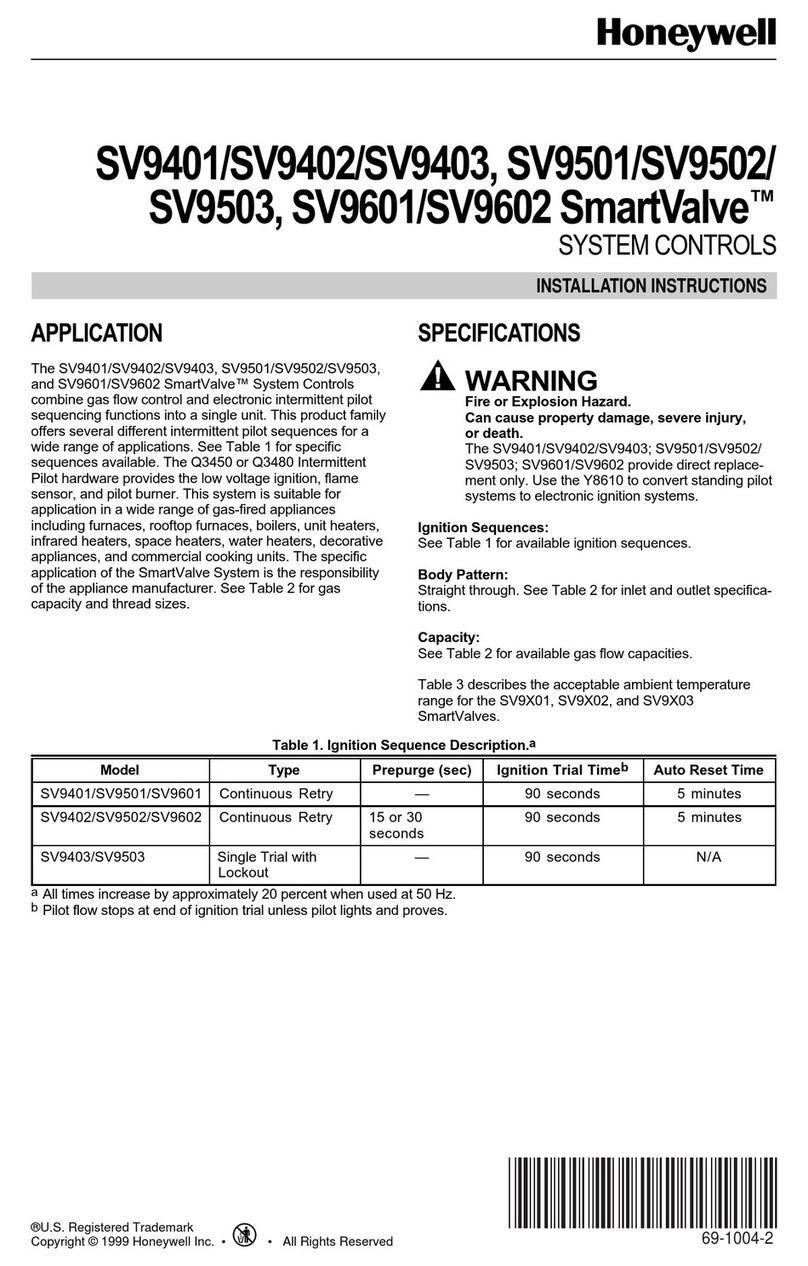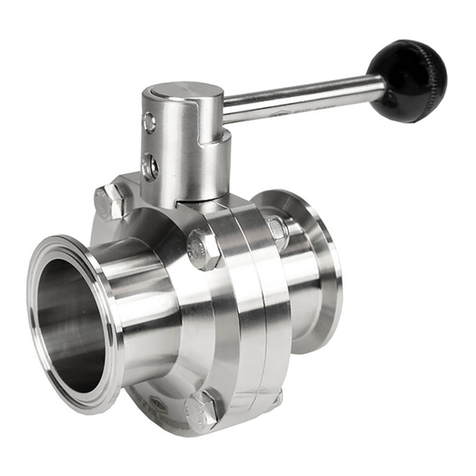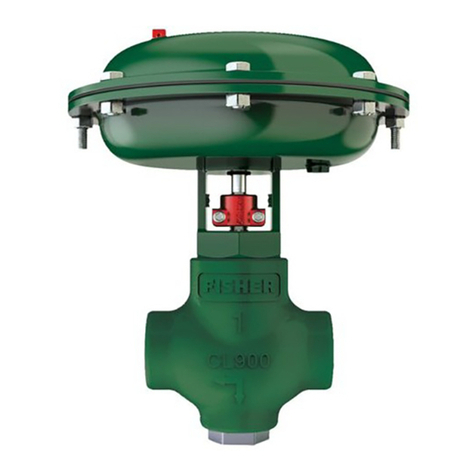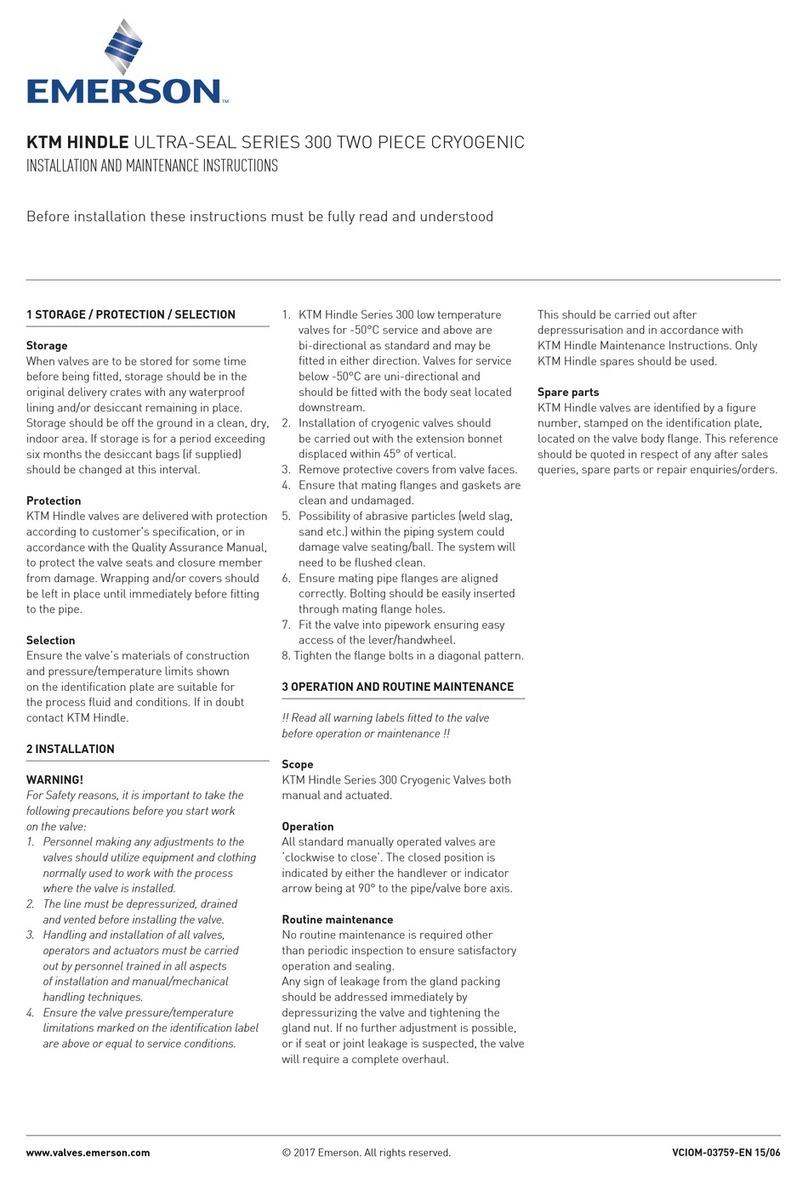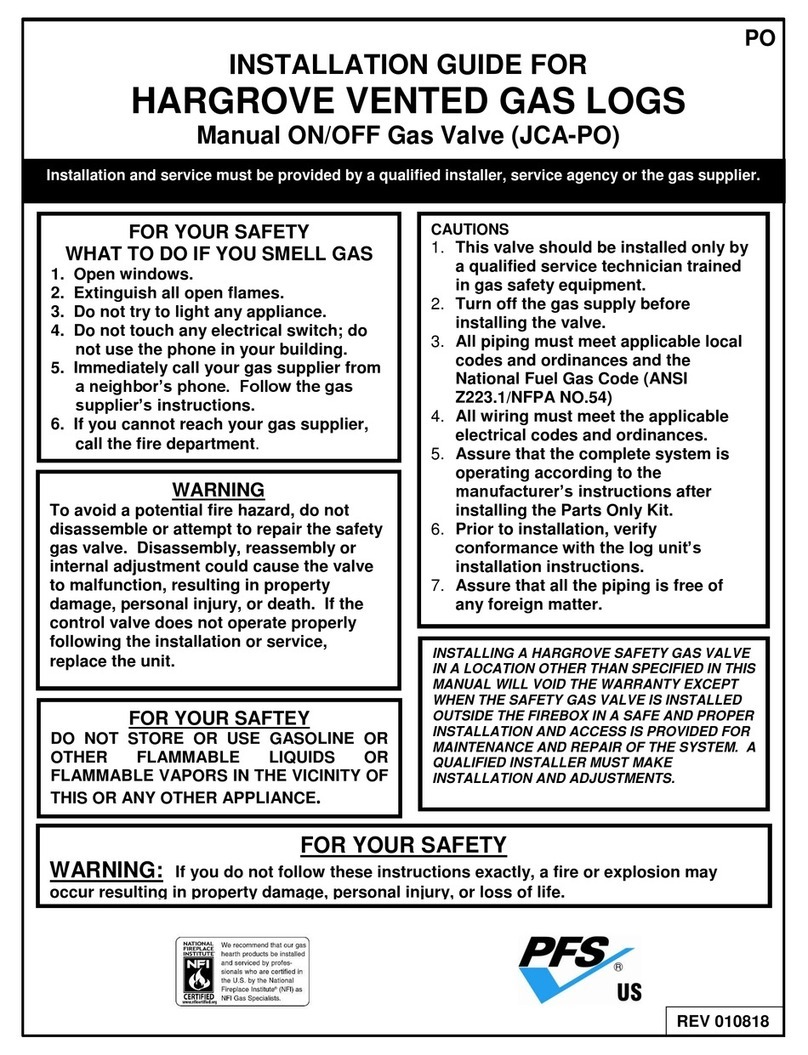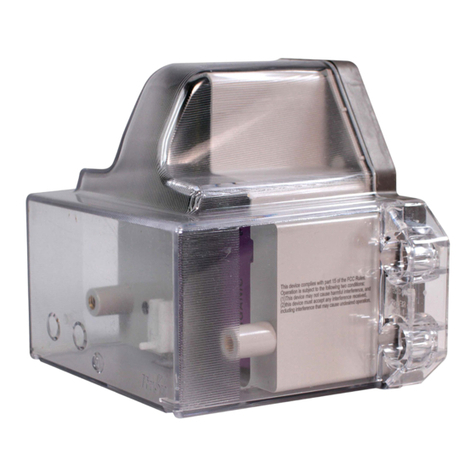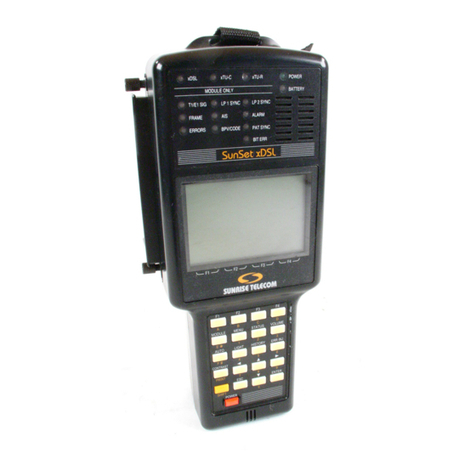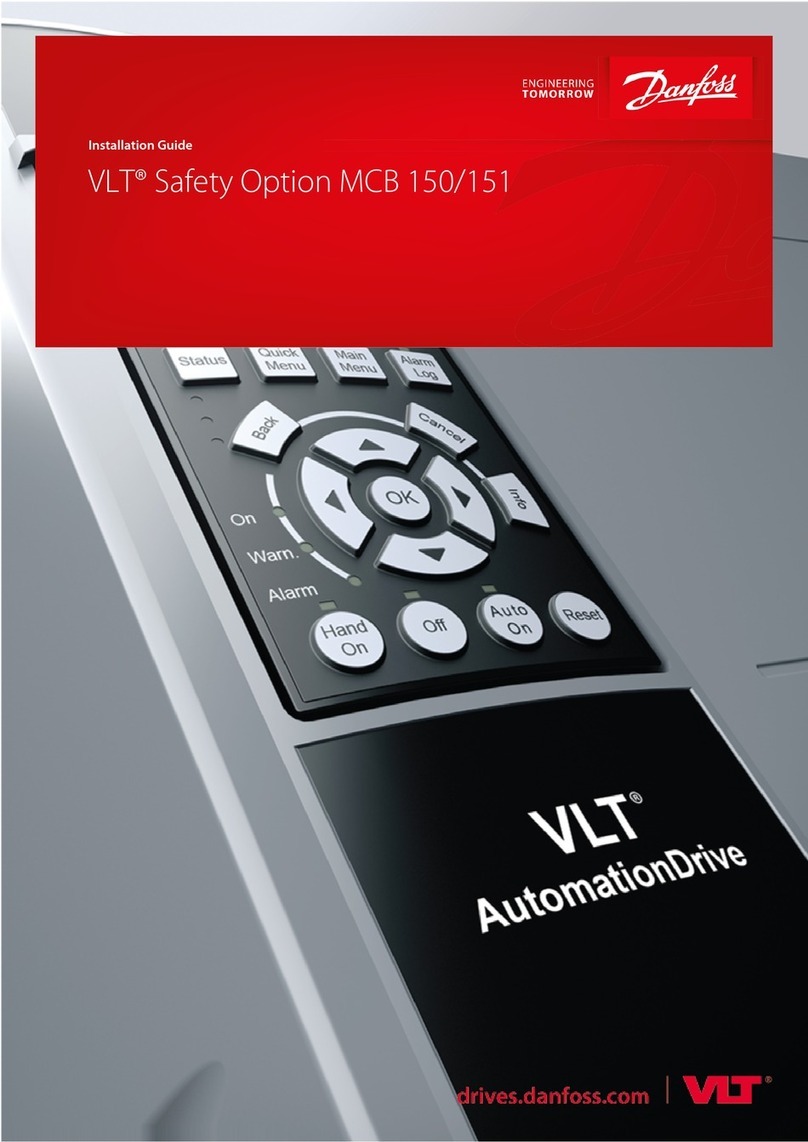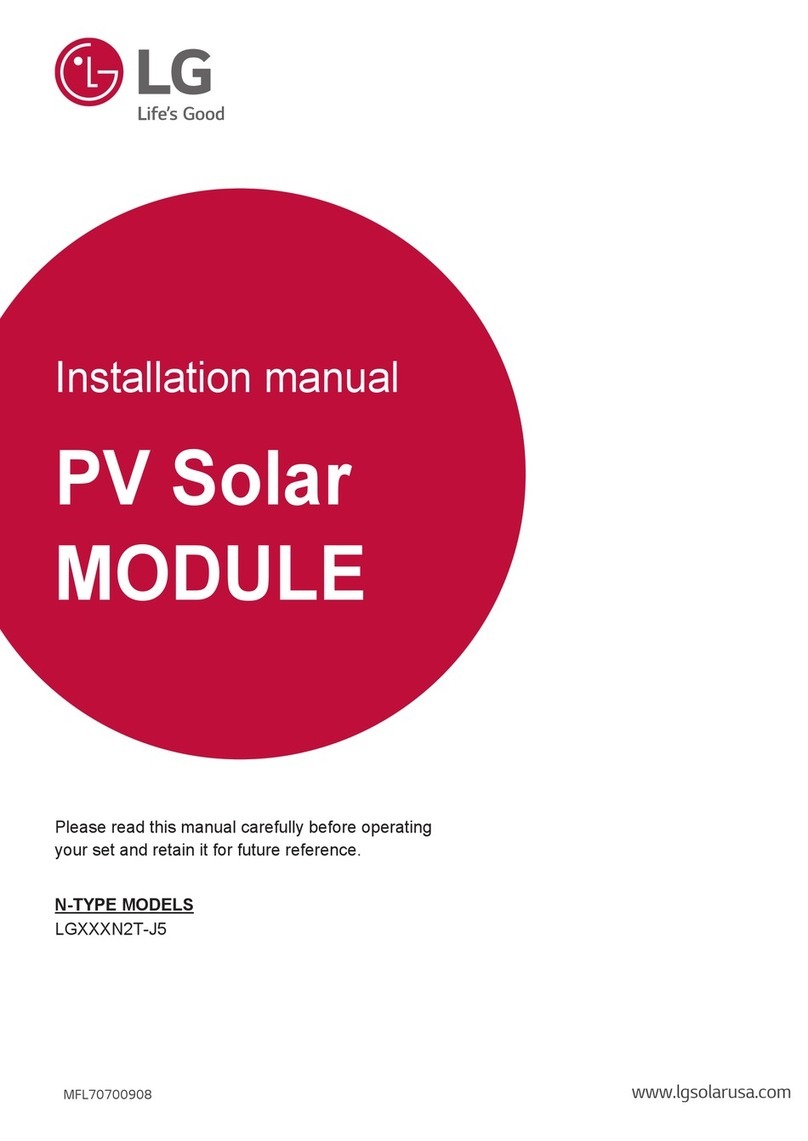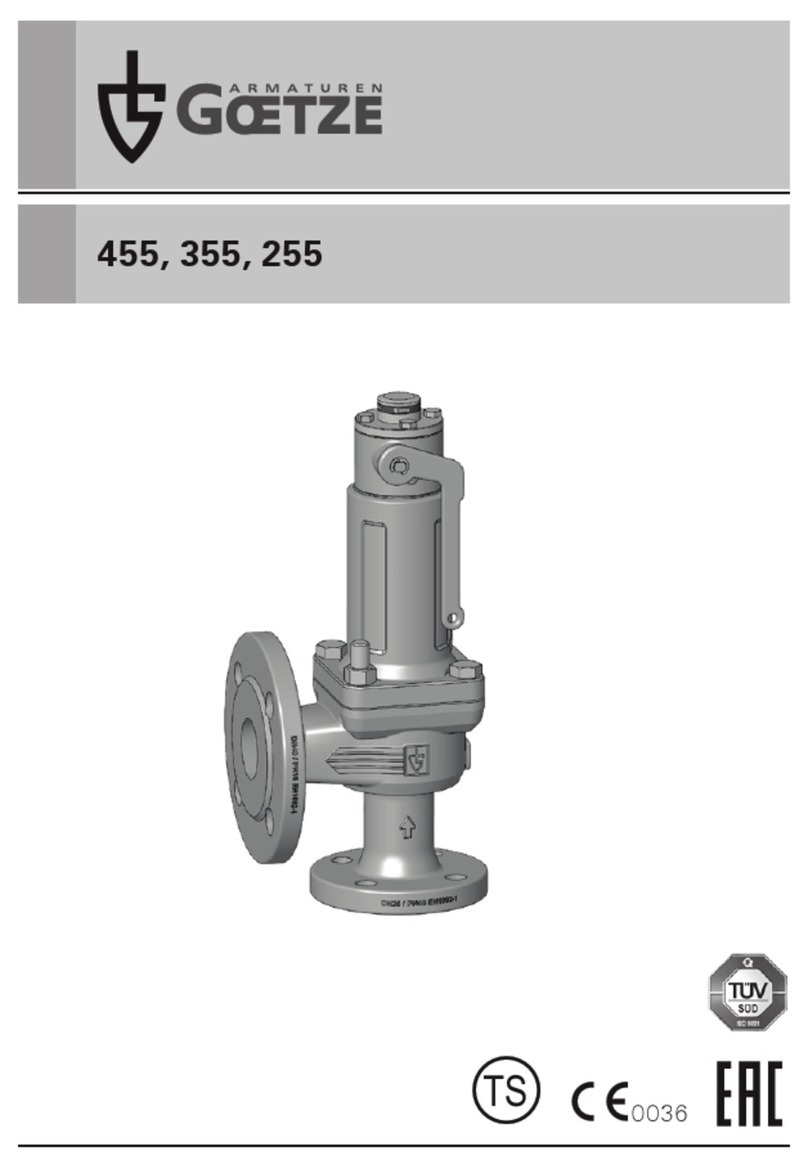Datasensor BWS-T2 Series User manual

DATASENSO
R
BWS-T2 SERIES
Multiray safety barrier, level 2,
1 … 2 pairs of photocells
INSTRUCTION MANUAL

WARRANTY
DATASENSOR S.p.A. warrants its products to be free from
defects.
DATASENSOR S.p.A. will repair or replace, free of charge,
any product found to be defective during the warranty period
of 36 months from the manufacturing date.
This warranty does not cover damage or liability deriving
from the improper application of DATASENSOR products.
CONDIZIONI DI GARANZIA
DATASENSOR S.p.A. garantisce i suoi prodotti esenti da
difetti.
DATASENSOR S.p.A. riparerà o sostituirà, gratuitamente,
ogni prodotto che riterrà difettoso durante il periodo di
garanzia di 36 mesi dalla data di fabbricazione.
La garanzia non copre danneggiamenti o responsabilità
dovute ad un uso non corretto del prodotto.
DATASENSOR S.p.A. Via Lavino 265
40050 Monte S. Pietro - Bologna - Italy
Tel: +39 051 6765611 Fax: +39 051 6759324
DATASENSOR S.p.A. reserves the right to make modifications and improvements without prior notification.
DATASENSOR S.p.A. si riserva il diritto di apportare modifiche e/o miglioramenti senza preavviso.
826190024 Rev.E
D
DE
EC
CL
LA
AR
RA
AT
TI
IO
ON
N
O
OF
F
C
CO
ON
NF
FO
OR
RM
MI
IT
TY
Y
We
DATASENSOR S.p.A.
Via Lavino, 265
40050 Monte San Pietro
Bologna - Italy
declare under our sole responsibility that the product(s)
BWS-T2 SAFETY CONTROLLER (TYPE 2)
to which this declaration relates in conformity with the following
standard(s) or other normative document(s)
CEI EN 55022, JUNE 1997:
LIMITS AND METHODS OF MEASUREMENTS OF RADIO DISTURBANCE OF INFORMATION
TECHNOLOGY EQUIPMENT
CEI EN 61000-4-2, SEPTEMBER 1996:
ELECTROMAGNETIC COMPATIBILITY (EMC). PART 4: TESTING AND MEASUREMENT
TECHNIQUES. SECTION 2: ELECTROSTATIC DISCHARGE IMMUNITY TEST
CEI EN 61000-4-3, NOVEMBER 1997:
ELECTROMAGNETIC COMPATIBILITY (EMC). PART 4: TESTING AND MEASUREMENT
TECHNIQUES. SECTION 3: RADIATED, RADIO-FREQUENCY, ELECTROMAGNETIC FIELD
IMMUNITY TEST
CEI EN 61000-4-4, SEPTEMBER 1996:
ELECTROMAGNETIC COMPATIBILITY (EMC). PART 4: TESTING AND MEASUREMENT
TECHNIQUES. SECTION 4: ELECTRICAL FAST TRANSIENT/BURST IMMUNITY TEST
CEI EN 61000-4-5, JUNE 1997:
ELECTROMAGNETIC COMPATIBILITY (EMC). PART 4: TESTING AND MEASUREMENT
TECHNIQUES. SECTION 5: SURGE IMMUNITY TEST
CEI EN 61000-4-6, NOVEMBER 1997:
ELECTROMAGNETIC COMPATIBILITY (EMC). PART 4: TESTING AND MEASUREMENT
TECHNIQUES. SECTION 6: IMMUNITY TO CONDUCTED DISTURBANCES, INDUCED BY
RADIO-FREQUENCY FIELDS
CEI IEC 61496-2, NOVEMBER 1997:
SAFETY OF MACHINERY - ELECTRO-SENSITIVE PROTECTIVE EQUIPMENT - PART 2:
PARTICULAR REQUIREMENTS FOR EQUIPMENT USING ACTIVE OPTO-ELECTRONIC
PROTECTIVE DEVICES (AOPDS)
Following the provision of the Directive(s):
89/336 CEE AND SUCCESSIVE AMENDMENTS
Monte San Pietro, 02/01/2001
Gianni Stradiotti
Quality Assurance Manager
UNI EN ISO 14001

BWS-T2 Series Instructions manual
INDEX
1. INTRODUCTION ............................................................................... 2
1.1. OPERATING DESCRIPTION ........................................................................... 5
2. INSTALLATION................................................................................. 9
2.1 MOUNTING THE BWS-T2............................................................................... 9
2.2 START SWITCH............................................................................................... 9
2.3 SENSORS.......................................................................................................10
2.4 SAFETY DISTANCE........................................................................................11
2.4.1. PROTECTION OF DANGER ZONES WITH BWS-T2
FOR PROTECTION OF FINGERS AND HANDS ................................11
2.4.2. PROTECTION OF ACCESS WITH BWS-T2 - 1-
OR MORE BEAMS FOR ARM AND BODY PROTECTION .................12
2.5 UNWANTED BEAM REFLECTIONS ...............................................................12
2.6 PHOTOELECTRIC SENSOR INSTALLATION ................................................14
2.7 ALIGNMENT OF THE SENSORS....................................................................15
3. ELECTRICAL CONNECTIONS ...................................................... 16
4. TECHNICAL DATA ......................................................................... 21

BWS-T2 Series Instructions manual
1
GENERAL VIEW
Figure A

BWS-T2 Series Instructions manual
2
1. INTRODUCTION
The BWS-T2 is an essential part of a photoelectric installation whose
purpose is to maintain a safe environment in potentially dangerous
areas where electrical machinery or equipment is in operation. It
performs this task by not allowing such machinery to start up unless the
dangerous area is clear of any persons or objects.
The product is designed to satisfy the following specifications (German
normatives):
The BWS-T2 can be used in the below listed insustrial sectors.
We inform that eventually other normatives and rules of local bodies for
safety at work have to be respected.
• Cold treatment of metals
prEN692 Mechanic presses
prEN693 Hydraulic presses
• Machinery for plastics and rubber
prEN201 Injection presses - moulding maschinery
prEN289 Shape- and moulding presses
prEN1114 Rail- and extrouding presses
prEN1417 Equipment for mixing with 2 cylinders
prEN422 Blow- shaping machinery
• Machinery for packaging
prEN415-2 Machinery for packaging of rigid prechaped goods
prEN415-3 Machinery for packaging, filling and enclosure
prEN415-4 Equipment for palleting and unpalleting
prEN415-5 Machinery for wraping
prEN415-6 Group packing machinery
prEN415-7 Machinery for arrangements

BWS-T2 Series Instructions manual
3
• Machinery for wood treatment
prEN691 General requirements
prEN859 Planing and straightening machinery with manual transport
prEN860 Single sided machinery for planing
prEN861 Machinery for combined planing and straightening
prEN1807 Band- saws
prEN848 Table milling machinery
prEN940 Combined Machinery
prEN1218 Double profile maschinery
• Paper- and printing machinery
prEN1010 Printing machinery
prEN1034 Machinery for paper production
• Machinery for tanning
prEN972 Alternative machinery with movable rolls
prEN1035 Machinery with movable slats
prEN931 Machinery for scratching, grinding, polishing, folding and
nailing
• Ohter machinery
prEN11553 Safety of Laser machinery for treating materials
EN775 Safety of handling automation
prEN1525 Driverless transport systems and their systems
Further normatives to be applied:
EN 292 Part 1: November 1991
Safety of machinery- Basic concepts, general principles for design:
Part 1: Basic terminology , methodology
EN 292 Part 2: November 1991
Safety of machinery - Basic concepts, general principles for design:
Part 2: Technical principles and specifications
EN 294: Juni 1992
Safety of machinery - Safety distances to prevent danger zones being
reached
by the upper limbs

BWS-T2 Series Instructions manual
4
EN 811: Oktober 1992
Safety of machinery - Safety distances to prevent danger zones being
reached
by the lower limbs
EN 999: Januar 1995
Safety of machinery - The positioning of protective equipment in respect
of approach of parts of the human body
EN 954 Part 1: März 1997
Safety of machinery; Safety related parts of control systems
- General principles for design
EN 60204 Part 1 Safety of machinery, electrical equipment of
machines - General requirements
Draft prEN 1050: Aprl 1996
Safety of machinery; risk assesment
FINAL DRAFT IEC 61496-1/Ed. 1.0: Safety of machinery - electro -
sensitive equipment,
Part 1: General requirements and tests.
Documents 44/206/FDIS and 44/206A/FDIS: 1997-03-28
FINAL DRAFT IEC 61496-2/Ed. 1.0: Safety of machinery - electro -
sensitive equipment,
Part 2: Particular requirements for equipment using active
opto-electronic protective devices.
Documents 44/208/FDIS and 44/206A/FDIS: 1997-0530
The BWS-T2 can be used in conjunction with our line of photoelectric
sensors as shown in the Technical Specifications.
The BWS-T2 has been designed so that one (1) or two (2) Emitter-Receiver
pairs can be connected to it.
The operating voltage is: 24VDC ±10%.
The status of the system is indicated by 3 visible LEDs:
•FREE green
•ALARM red
•TEST yellow

BWS-T2 Series Instructions manual
5
The BWS-T2 is rated as a type 2 ESPD (Electro Sensitive Protective
Device) according to the EUROPEAN STANDARD.
A type 2 ESPD is a device which relies on the correct response to external
tests to maintain its safety integrity. The device may not detect failures in
system integrity between tests.
1.1 OPERATING DESCRIPTION
The BWS-T2 features the following functions:
START INTERLOCK:
A start interlock is a means for preventing automatic starting after the
BWS-T2 is switched on.
INITIAL TEST:
A test which is performed via the start switch, after the BWS-T2 has
been powered, in order to test the complete safety related control
system before the first operation is initiated.
RESTART INTERLOCK:
A means for preventing automatic re-starting of a machine after the
optical beam(s) was (were) interrupted.
CYCLE TEST:
A test which can be performed at any time while the BWS-T2 is in the
active operating mode in order to test the complete safety related control
system.

BWS-T2 Series Instructions manual
6
The flow chart on the following page can be used to describe the
operation of the BWS-T2:
BWS-T2 OPERATION
Start
Activated
?
Failure Blocked state
Interrupt
Light-Beam
Test
Power on
Output-Contact
Open
?
Output-Contact
Closed
?
?
Yes
Yes
Yes
Failure
?
Blocked state
YesNo
No
No
No
No
Output-Contact
Open
Yes
Initial Test
Cycle Test
Q
QQ
Q
R
RR
R
S
SS
S
T
TT
T
U
UU
U
V
VV
V
Output-Contact
Open
Figure 1

BWS-T2 Series Instructions manual
7
QUpon application of power, the red ALARM LED lights up and the
START INTERLOCK function will prevent the operation of the output
contacts.
RThe active operation mode can be initiated only with a N.O. (normally
open) start switch. After closing the start switch, the INITIAL TEST
function will be activated automatically. The red ALARM LED goes off
and the yellow TEST LED lights up.
SAfter the start switch is released, and only if no fault is detected, both
N.O. output contacts will switch to the active operation mode.
In this case the yellow TEST LED goes off and the green FREE LED
lights up.
TThereafter, any interruption of the optical beam(s) will cause the
RESTART INTERLOCK to prevent automatic re-activation and force
the operator to re-initiate with the start switch.
UIf a fault is detected, after the start switch is released, the yellow TEST
LED goes off and the red ALARM LED lights up; the output contacts
remain open (preventing machine start up).
VDuring the active operating mode, the CYCLE TEST can be performed
by means of 2 N.C. contacts: Test 1 and Test 2 (see figure 2).
This procedure is normally used to detect the status of the BWS-T2
periodically.
By opening the Test 1 contact, the CYCLE TEST is started; the output
contacts are OPEN for the duration of the test and will CLOSE after
the test is completed only if the BWS-T2 has detected no fault.
The test is completed when the Test 2 contact is opened and then
closed.
The CYCLE TEST is such that any short-circuit, open, or component
malfunction will be instantly recognized.
The LED indicators for the CYCLE TEST have the same function as in
the INITIAL TEST.

BWS-T2 Series Instructions manual
8
There are two ways to connect the Test 1 and Test 2 contacts:
a) CYCLE TEST procedure using 2 N.C. contacts.
1 2 3 4
TEST1 TEST2
Figure 2
When the Test 1 contact opens, the test procedure begins.
When the Test 2 contact opens and closes again, the test procedure ends.
This type of connection allows to detect short-circuits at the test cables.
b) CYCLE TEST procedure using 1 N.C. contact.
1 2 3 4
TEST
Figure 3
When the Test contact opens, the test procedure begins; when it closes,
the test procedure ends.

BWS-T2 Series Instructions manual
9
2. INSTALLATION
2.1 MOUNTING THE BWS-T2
The BWS-T2 must be mounted in an enclosure with at least an IP54
rating. The dimensions of the BWS-T2 are given in the following
diagram for mounting purposes:
100
8 6
110
2035.519.5
75
85
6
60
4.5
mm
Figure 4
2.2 START SWITCH
The external start switch, which allows the enabling of the active
operating mode, must be installed in such a way that an unobstructed
view of the danger area is provided.
IT MUST NOT BE POSSIBLE TO ACTIVATE THE START SWITCH
FROM INSIDE THE DANGER AREA !
By-passing the start switch in order to eliminate the START
INTERLOCK and the RESTART INTERLOCK functions is not allowed.
Therefore the start switch must be closed and then opened again to
begin the INITIAL TEST.

BWS-T2 Series Instructions manual
10
2.3 SENSORS
The photoelectric sensors must be mounted in front of the danger area
(as per EN 999) so as to protect the entire danger area.
The sensors must be installed in the vicinity of the operating
equipment in such a way as to allow ENTRY or OPERATION of the
machine ONLY THROUGH the safety barrier. The possibility of
reaching the danger area from below, above or from around the safety
barrier must be prevented. It must not be possible to move or alter the
installation in any way.
In addition, it must not be possible to be inside of the danger area
behind the safety barrier. This must be detected by the safety barrier.
The electrical connection from the BWS-T2 box to the sensors is done
via shielded cables. The possible lengths are listed in the sensor
datasheets. If using sensors with connectors, be sure that your cable is
shielded.
2.4 SAFETY DISTANCE (SD)
The photoelectric sensors must be mounted at a "safety distance" (S)
in front of the machine or danger area. It must be assured that the
dangerous movement is stopped before a person is able to touch the
dangerous moving parts.
This safety distance (S) depends upon the reaction time of the BWS-
T2, the speed of the person or object penetrating the "guarded" area
(approx. value: v=1.6m/s) and the lagtime of the machine. See figure
5.

BWS-T2 Series Instructions manual
11
H
S
BWS Danger zone
H
H1
n-1
n
Figure 5
S = V * T+C C=8(d-14mm)
S: Minimum distance - safety distance
V: Approaching speed
T: Delay time of the complete system
C: Supposed length of a part of a body with ∅< resolution of fotocell
array, that exceeds the protecting area without a guaranteed
detection.
d: Detection capabillity (see table characteristics of photocells) -
Fingerresolution: ∅≤14mm; handresolution: ∅≤40mm;
armresolution: ∅≤70mm.
H: Vertical position of the protecting area above the floor
2.4.1. Protection of danger zones with BWS-T2 for protection of fingers
and hands
Condition: 14mm<d40mm; C0
For 100mm<S500mm is valid:
S=2000*T+C
For S500mm is valid:
S=1600*T+C
Must not be applied if also children have to be protected!

BWS-T2 Series Instructions manual
12
2.4.2. Protection of access with BWS-T2 - 1- or more beams for arm
and body protection
Condition: 40mm<d70mm; C0
S=1600*T+850mm
Mounting hight of the emitter(s) and reiceiver(s):
1 Pair E/R: 750mm
2 Pairs E/R: 400mm, 900mm
3 Pairs E/R: 300mm, 700mm, 1100mm
4 Pairs E/R: 300mm, 600mm, 900mm, 1200mm
Criterion: No limbs passing below the lowest beam
No limbs passing below the highest beam
No limbs passing between 2 beams
No passage between 2 beams
Highest beam 900mm, lowest beam 300mm
2.5 UNWANTED BEAM REFLECTIONS
Specular reflections from shiny surfaces in proximity or within the
beam envelope (cone) can reflect light, thus affecting the ability to
detect an intrusion into the guarded area.
The minimum distances shown in figures 7a and 7b must be respected
to satisfy the arrangement shown in figure 6b (figure 6a is not correct).

BWS-T2 Series Instructions manual
13
x
8
D
8
INCORRECT
INSTALLATION
Figure 6a
88
x
D
CORRECT
INSTALLATION
Figure 6b
12 5634 7 8
D
30
X
10
20
cm
m
reflecting surface
X
D
S5 or S10
D
X
0.5
1.0
10 20 30 40 50
0.6
0.7
0.8
0.9
m
m
reflecting surface
D
X
S30
Figure 7a Figure 7b

BWS-T2 Series Instructions manual
14
2.6 PHOTOELECTRIC SENSOR INSTALLATION
When mounting the sensors (emitter(E)/receiver(R) pairs) to the BWS-
T2, care must be taken to position these components in such a way as
not to interfere with each other. (including with the help of a mirror, see
figure 8b and 8c). The layouts in figures 8a-8d are bad examples NOT
to follow because they are unreliable.
E
E
R
R
Figure 8a
ERR
E
Figure 8d
E
E
R
R
mirror
Figure 8b
ER
ER
mirror
Figure 8c

BWS-T2 Series Instructions manual
15
Figures 9a-9b show the proper disposition of these elements.
E
E
E
E
RR
RR
Figure 9a
E
E
R
R
Figure 9b
2.7 ALIGNMENT OF THE SENSOR(S)
To align the sensor(s), you have to bridge the start switch from
terminal 19 to terminal 20. Using the Receiver output LED of the
photoelectric sensor(s) you can align the light barrier.
If the sensors are correctly positioned, the yellow TEST LED lights up.
If beam 1 or 2 is interrupted, the ALARM LED at the BWS-T2 lights up
and the TEST LED turns off.
When the alignment is completed, disconnect the bridge between
Terminal 19 and Terminal 20.

BWS-T2 Series Instructions manual
16
3. ELECTRICAL CONNECTIONS
The BWS-T2 controller provides for the following connections:
Signal Terminal
Output 1 14; 29
Output 2 15; 30
Start 19; 20
Test 1 1;2
Test 2 3;4
Emitter 1 5;6;7;8
Receiver 1 21;22;23;24
Emitter 2 25;26;27;28
Receiver 2 9;10;11;12
Input +24 VDC 16
GND 18
Earth GND 17
See the individual diagrams (figures 10 - 13) for wiring details.
One (1) or two (2) emitter-receiver pair(s) can be connected to the BWS-T2.
If using only one Emitter-Receiver pair, the cables of the Emitter must be
connected to the EMITTER 1 terminals and the cables of the Receiver must
be connected to the RECEIVER 2 terminals.
The EMITTER 2 and RECEIVER 1 terminals remain free.
CAUTION
Supply only the photocells from this device!
Always use shielded cables to wire the emitter and
receiver pairs.

BWS-T2 Series Instructions manual
17
START
User tool User tool
EL. CONTROL CABINET
VOLTAGE
SUPPLY
24 V + 10 %
-
EMITTER RECEIVER
max. 220 VAC
S
H
I
E
L
D
FUSE
TEST1 TEST2
L1
N
+
-
302928272617 18 19 20 21 23 24 252216
1234 567 891011 1312 1514
O
T
1
U
O
T
2
U
SB-BW S-T2
- +
+ -
Figure 10 - One Emitter/Receiver pair
Table of contents
